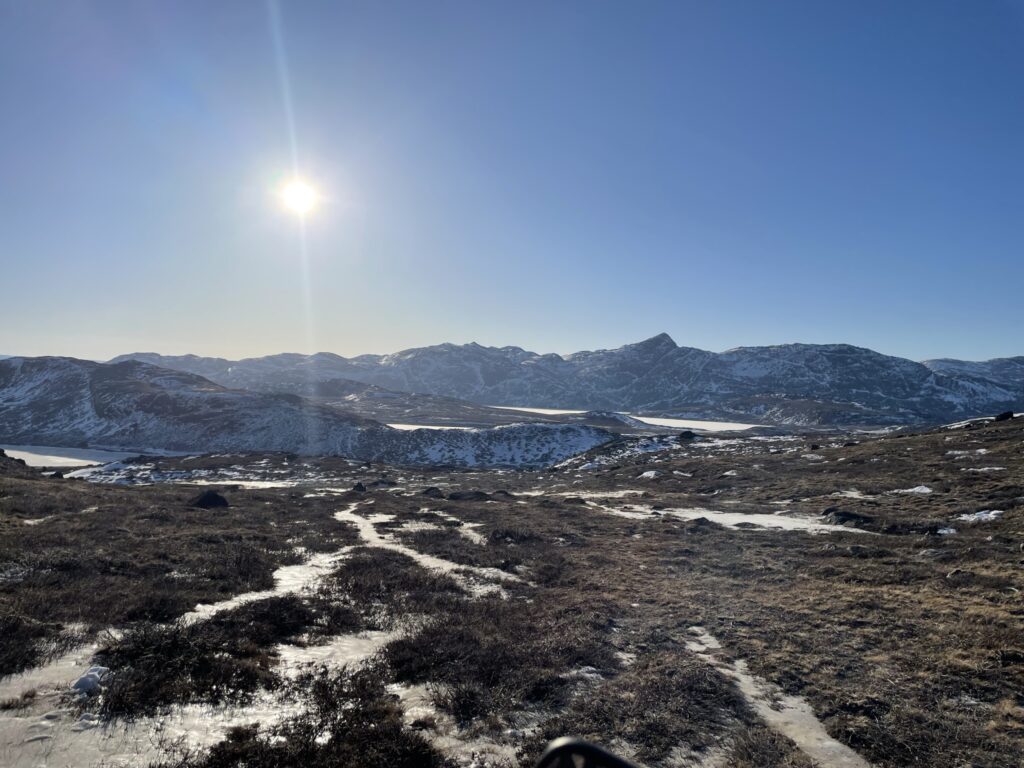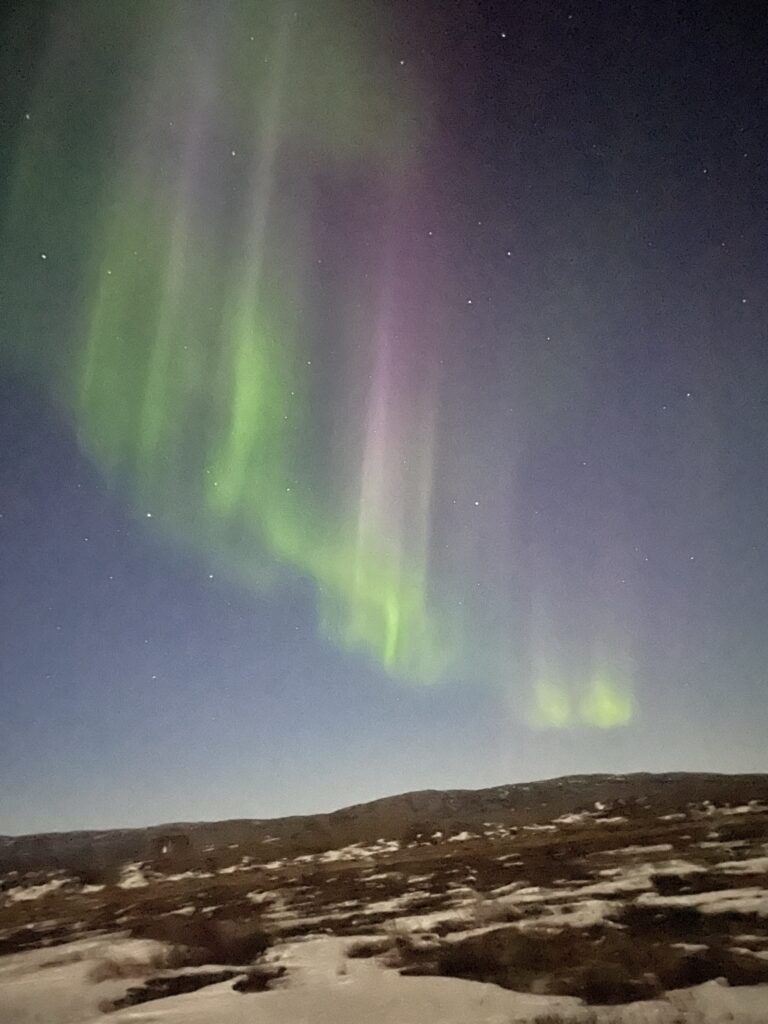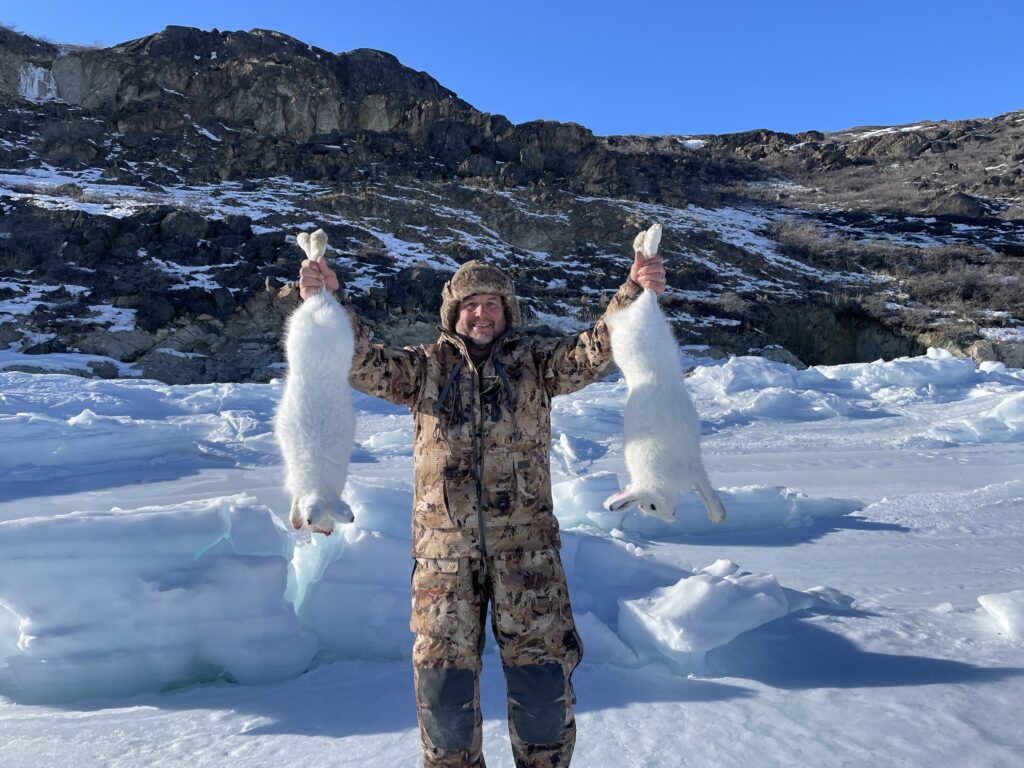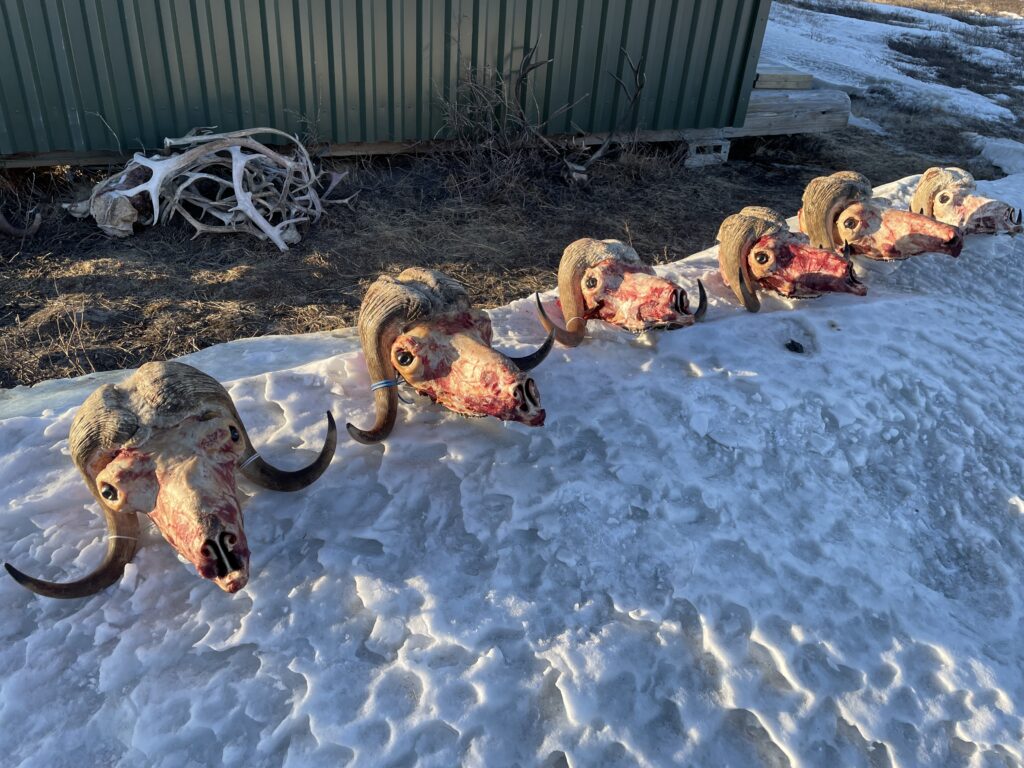North To Greenland
Muskoxen, Ptarmigan and Ice-Fishing on the Arctic Circle
Originally published in the March/April 2024 issue of Safari Magazine.
By Bob Newland
I stepped from the warm cabin of the aircraft. The frigid temperature hit me in the face like a sheet of ice. My breath created a cloud so thick in front of my face that I had to wait for it to clear before attempting to descend the stairway to the tarmac.
As I reached the blacktop, two thoughts came to mind: Did I pack enough warm clothes? And what the hell have I gotten myself into now? I couldn’t believe I was standing in Greenland.
A good friend of mine, Chris Muller, owns and operates Outdoor Adventure Specialists, a booking service that assists hunters like me to achieve our dreams and goals. For several years Chris had been donating a Greenland muskox hunt to the Lehigh Pennsylvania Valley Chapter’s annual fundraising auction. Every year I talked about buying it but never seemed to put all the pieces together. I think my wife had gotten tired of listening to me and said, “Why don’t you just buy it this year?” That was all I needed, and my hand went up in the air.
Greenland has always intrigued me, though I’m not sure why. I had never really researched or investigated it, other than talking to Chris, but I always thought I’d like to go. Well, here I am, embarking another adventure.
I invited my friend Nathan “Ray” Raymond along and the planning began. We had almost a year to get ready. Chris told us what to expect. We certainly discussed the temperature but until you actually experience deep sub-zero in person, you can’t fully appreciate what it feels like.
We boarded our plane to Copenhagen, Denmark, where we would overnight before flying into Greenland. I remember the frustration as we flew over Greenland four hours into our flight with four hours still ahead of us until we reached Copenhagen. Then in the morning we had a four-hour flight back to our destination. A parachute seemed like a good option as we flew over final landing spot.
The Air Greenland plane was much smaller and was full of passengers as we made our way to Kangerlussuaq, the home to Greenland’s largest international airport. Back in World War II, the airport served as a U.S. military base. It was later abandoned and turned into Greenland’s major international transport hub. Kangerlussuaq means “big fjord” in Greenlandic. It is on the western edge of the country and sits on the bank of the large fjord of the same name. One main road leads through the town, which if taken north, leads to Greenland’s giant ice sheet and the Russell Glacier.
Later in the week, when our hunting was completed, we made our way to the ice cap to experience it first-hand. It was like nothing I had ever seen before. They say that when you walk out on the cap, you can look in any direction, other than the one you came from, and the ice will go on for hundreds of kilometers, even below you. Roughly 85 percent of Greenland is covered in ice.

Karsten Ling of Lings Hunting Greenland met us in the airport lobby. He is a large man with a complexion that looked like he had spent considerable time out in the cold. It occurred to me in all the hunting trips I have taken over the years, this was the first time I have ever hunted with a guide that I had never met nor even spoken to. He was a quiet unassuming man who after I got to know a little better, I really enjoyed being around.
Karsten brought us to his home where he provided us with seal skin outwear. Each of us received a jacket and pair of bibs made from seal skin. I’m not sure where I would have ever worn them back in New Jersey, but boy, did I want to take them home.
Unfortunately, the United States does not allow for seal skin to be brought into the country. These were by far the warmest garments I have ever worn. Some of the hunters also borrowed polar boots from Karsten.

I used my Kenetrek Grizzly pack boots, which worked well. Once outfitted, we piled into two pickup trucks and made the two-hour drive out to camp. The trip started out on a dirt road but quickly turned into driving on the frozen river. It’s tough to wrap your head around the fact that you are driving on a river but we were making good time on the smooth ice.
We also had two assistant guides with us sharing a room. Henning Fleischer and Angerla Lundblad who we affectionately nicknamed Smiley, were Greenlandic natives who appeared to be in their late twenties or early thirties.
Angerla’s face was etched in a permanent smile. A large dining and gathering room and an indoor bathroom, which was a very nice surprise, made up the rest of the cabin. This time of the year, they typically have more snow on the ground and snowmobiles are used to get around.
This year the snow was more sporadic so we would be hunting off four-wheelers. I was happy in the morning when I was told I would have my own four-wheeler to drive and not have to buddy up with anyone.
In the morning Ray and I were joined by a third hunter, Greg Shubert from Georgia. We left camp with the two assistant guides. Ray and Greg each riding behind one of the guides and me out there freewheeling on my own.
It didn’t take long for me to get in trouble for hot-dogging, drifting the quad side to side along on the ice. I settled down and followed in the line from there out. I have had the good fortune to hunt Alaska several times and the back country in Montana and Canada. I thought I had been to some pretty remote destinations.
Nothing has ever compared to how remote Greenland is. Even the town of Kangerlussuaq is pretty barren, but when you get a couple hours out of town and then strike out on the four wheelers, there is just nothing out there but big mountains, snow and muskoxen.
We had been riding along only about 45 minutes or so, when we came across our first heard of eight to 10 muskoxen. We parked the quads and set out on foot to get within shooting range.
Smiley, Henning and I had crawled up to the crest of the small hill and were glassing them as they lay on the frozen arctic snow. As the two guides conversed in Greenlandic, Ray made his way up alongside me. I started discussing with Smiley the two bulls that stood out to me.
He confirmed that they were both good, mature animals worth taking. I suggested that since Ray and I were both there, how about we shoot at the same time and take both of them. More Greenlandic conversation occurred then they called Greg up from the bottom of the hill to shoot. I found this pretty confusing at the time but later learned that Greg had signed on to shoot two muskoxen, so they wanted to get his first out of the way early.
Greg made his way to the ridge and took the first of the two bulls. The herd stood dazed and confused, unsure of what had happened. Smiley and Henning remained quiet as if nothing else was going to happen when I finally asked, “Can I shoot the other one?” They said, “Sure,” and I set up to take the shot.
Maybe their hesitation was due to them knowing how much work it is to collect, skin and cut up two muskoxen at one time? I’m not sure, but the opportunity was there, and I didn’t want to waste it. Later, I was even happier when it took us almost the entire day to find one more shooter bull for Ray.
Muskoxen are remnants of the last ice age. They got their name from the strong musky odor they emit during the breeding season. Muskoxen once lived widely across the Arctic but now exist mainly in Greenland, Arctic Canada and Alaska.
The processing of the two prehistoric bulls took hours. They were skinned, gutted and quartered. Then we wrapped them in burlap and tarp and loaded them onto a large wooden sled that would be pulled around all day as we continued to hunt.
As easy as it was to find Greg’s and my bulls, it was just as difficult to find a shooter bull for Ray. It was late in the afternoon when Ray connected on another good muskox. We estimated that we were about 40-50 miles from camp when Ray finally shot. By the time the guides finished cutting and loading the third muskox, and we made the trek back to the camp, we were arriving in the dark.
It was a long day but one of the best I have spent out hunting. I was in constant awe of the beauty of Greenland. Riding around on the ATV, I was able to take it all in. It is a breathtaking place to be and to hunt.
Later that night we were treated to an incredible display of the Northern Lights. The sky was lit up in green, purple and yellow making for another incredible experience in the wild.

The other two hunters were John Rutt from Pennsylvania and Glenn Hajdu, an Australian archery hunter. They had come across some muskoxen that first day but lost a lot of time as the Aussie attempted a couple long stalks. So, as we left camp the second morning, they were back to chasing muskox with Greg.
Ray and I took a couple shotguns with Smiley and Henning and went looking for ptarmigan, who were in full white plumage this time of year. It didn’t take long, and we were into the birds.
We collected six or eight and turned our sights to Arctic hare. We still had the shotgun along but also had a .223 rifle to try to bag a couple very large rabbits.
One thing I learned quickly. These hares like to be up high on the mountains. It involved some serious climbing to get into range and they were more than a little skittish. None the less, I managed to take three, the largest of which pushed the 15-pound mark.

I’m having two of them mounted, and one’s hide tanned. I’m also having two ptarmigans mounted. These combined with my muskox will serve as a wonderful memory of this harsh and beautiful land for years to come.
Later that day we learned that Greg had taken his second muskox, and John had been successful as well. Glenn continued the quest with his bow and sealed the deal the following day. Five hunters collected six muskoxen and had a great time.
Karsten Ling knows what he’s doing and understands that his hunters are tourists as well. Once the hunting was completed, he took us back to Kangerlussuaq to do some shopping for our families back home. We visited the polar ice cap and even did some ice fishing.
I would never hesitate to return to Greenland and hunt with him again. Now, for the long journey home. .
Robert Newland is the president of SCI’s Lehigh Valley Chapter.


